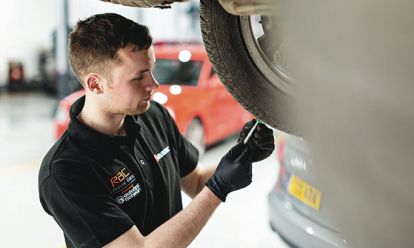Find out everything you need to know in our essential car maintenance guide to 2025’s MOT changes.
What is the MOT test?
Currently in the UK, all cars over three-years-old must legally have an MOT test carried out every year by an approved testing centre.
The test checks the technical elements of your vehicle to make sure it’s safe to drive, and detects toxic emissions that could harm the environment.
The latest shake-up of the rules is designed to keep you and other road users safer, but many drivers are concerned about what the changes will actually mean.
MORE ADVICE: The most common MOT fails and how to avoid them
MOT changes in 2025
The Driver and Vehicle Standards Agency (DVSA) has revealed plans to combat MOT fraud through a new trial that involves photography in 2025.
When the future strategy for MOTs was outlined in 2023, one of the primary focuses was tackling fraud and making it easier to identify and assist those who make mistakes.
As part of this new initiative, MOT testers will be required to take a photo of the vehicle and submit the details on the Gov.uk website. The photo will be added to the vehicle's record in an effort to reduce the risk of ‘ghost MOTs’ and help prevent genuine errors.
What are ghost MOTs?
A "ghost MOT" occurs when a pass certificate is issued for a vehicle that has never undergone an actual test.
According to the DVSA, ghost MOTs now account for 80% of all fraudulent MOT certificates. This illegal practice is typically carried out by dishonest MOT testers or businesses that create false certificates to make it appear as though a vehicle has passed its MOT.
The DVSA's announcement emphasizes the importance of eliminating ghost MOTs, as this fraudulent activity compromises vehicle safety.
Although the trial is currently in its early stages, the DVSA will review data from the image files, including details like the location and vehicle type, and cross-check it with the issued MOT certificate. To support this effort, the DVSA is inviting additional MOT testers to volunteer for participation.
MOT testers will be asked to take a photograph of the vehicle when it is in the testing bay. The DVSA will then compare the image with the recorded MOT test in its database to ensure the vehicle being tested is physically present at the location.
Can I report a fake MOT to the DVSA?
If you suspect an MOT tester or centre is breaking the law, you can report it to the DVSA. Reports can be made anonymously by phone, post, or email. You do not need to provide personal details or appear in court.
You can report an MOT tester if you believe they are:
- Issuing an MOT certificate to a vehicle they know should have failed
- Issuing an MOT certificate to a vehicle that hasn’t been tested
- Accepting bribes for MOT certificates
When reporting, provide as much detail as possible, including who is involved, what has been done, when and where it happened, and information about the vehicles.
To report an issue, contact the DVSA Intelligence Unit via email at [email protected] or by calling 0800 030 4103. The lines are open Monday to Friday from 7:30am to 6pm.
Penalties for fake MOTs in the UK
Depending on the severity of the offence, an MOT tester or garage could face penalties such as a ban from conducting future MOTs, significant fines, or even a prison sentence.

SALE – up to 40% off*
Roadside & Recovery from £5.29 a month*
• Cheaper than AA Price Promise or we’ll beat by 20%^
• We get to most breakdowns in 60 mins or less
• Our patrols fix 4/5 breakdowns on the spot

Can I drive my vehicle away if it fails?
Testing centres don’t have the power to prevent you from driving a dangerous vehicle. You could still take it to another garage to get it repaired if you want, although you run the risk of being fined or receiving points on your licence for driving an unroadworthy vehicle.
If you’ve taken your car to a council-run MOT centre that doesn’t do repairs and it fails, you should get it recovered by a garage.
The RAC’s breakdown policy does not cover vehicles shown to be in an unroadworthy condition.
It’s your responsibility to make sure your vehicle is always kept in a roadworthy manner. This should be done by regular servicing and upkeep. Check out our guide to essential under-the-bonnet checks.
Want more useful content like this sent straight to your inbox?
READ NEXT: MOT checklist and comprehensive guide
Are you experiencing a car fault, warning, or mechanical problem on your road trip? Find a local mechanic with the RAC.
Need to insure a vehicle for a short period of time? Our temporary car insurance product is perfect if you're looking for flexible and comprehensive cover for between 1 hour and 30 days.

SALE – up to 40% off*
Roadside & Recovery from £5.29 a month*
• Cheaper than AA Price Promise or we’ll beat by 20%^
• We get to most breakdowns in 60 mins or less
• Our patrols fix 4/5 breakdowns on the spot












